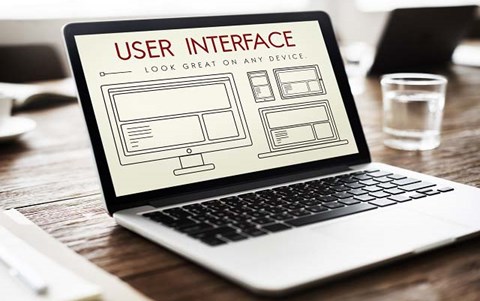Put the user in user interface

About this lesson
In this lesson sequence students investigate the importance of quality design and design principles in creating an efficient and effective user interface.
Year band: 5-6
Curriculum LinksCurriculum Links
Links with Digital Technologies Curriculum Area
| Strand | Content Description |
|---|---|
| Processes and Production Skills |
Design a user interface for a digital system (AC9TDI6P03). |
Learning hook
A 4 minute video from Human Interface Design shows an audience responding to some confusing user instructions. The video highlights the importance of understanding how users will typically use a piece of software or hardware.
One section of the PDF Human Interface Design includes a section titled ‘What’s it all about’ which discusses some of the disasters that occur when the user interface is confusing or inefficient.
Show the video titled ‘Microwave racing’. It is used in a learning sequence titled ‘The Microwave Racing Video’. The differing designs of each microwave create a real difference in the end results.
Encourage students to discuss, in pairs, some examples of software/equipment that is hard to use or confusing. (Examples could include programming the TV, changing the time in the car’s clock display etc). The website Bad Designs has some good examples of products that fit into this category. There are some good examples in the PDF titled Human Interface Design of disasters related to poor user design and related interfaces.
Have a class discussion about this topic.
Encourage students to identify the attributes of good design. Some of these might be:
- Simple to use
- Responsive in short time
- Easy to understand
- Consistent on all interfacing screens
- User knows what to do next
- Attractive.
Students might wish to prioritise the elements that they think are important using some type of Diamond Ranking Template.
Learning map and outcomes
Share the learning intentions with the class. (Language and terms used will vary according to year level.) Tell students that they will:
- Become aware of the importance of design
- Develop and apply criteria related to good user interface design
Learning input and construction
- Human Interface Design includes a set of learning activities set in a chocolate factory. Students analyse how the doors might work most effectively for a group of users with specific needs. They explore the advantages of physical analogies and leveraging cultural understandings for an improved user experience. They look at how users transfer prior learning to new situations and user experiences. They design a set of icons to represent a set of actions.
- The CSER MOOC video User Interface Design Overview contains some useful slides. One slide encourages students to compare the differing designs for user of Scratch (Scratch by MIT and ScratchJr). Encourage a discussion about the ways in which each interface caters for the specific audience. Connect this with the English curriculum where students make presentations designed for “defined audiences and purposes”.
- The CSER MOOC video User Interface Design Overview < > includes a slide that outlines the nature of Input Controls, Navigation Components, Information Components and design elements such as font and colour. Show students this slide and encourage them to critique a website or app using the terminology from this slide. The video also contains some great UI questions that students can use or adapt in their critique.
Learning demo
There is a set of activities and worksheets that underpin each of these elements within Human Interface Design.
Learning reflection
Human Interface Design includes an activity whereby students design a set of icons to represent a set of actions. Ask students to do this in pairs and then swap their work with each other to critique by applying the criteria that they have developed for design.